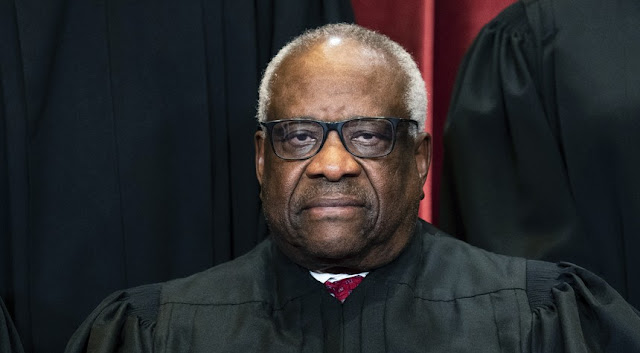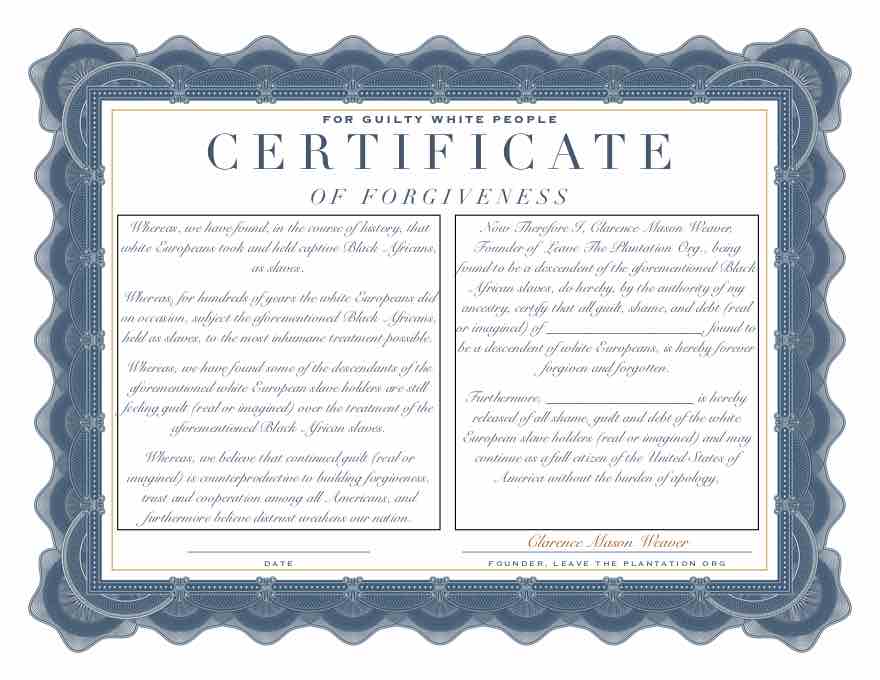LTP News Sharing:
Even though Supreme
Court Justice Clarence Thomas joined Chief Justice Roberts in
the majority opinion finding that using a student’s race in
college admission decision violated the 14th Amendment, Thomas
also filed a concurring opinion explaining more of his thinking
on the matter.
In his usual style,
Justice Thomas traces the history of the United States and its
citizens’ ongoing efforts to pursue a more perfect union —
efforts that haven’t always been smooth and have, at points,
failed to move the country forward. Still, Thomas shares his
optimism that America will continue to become a better place,
all while excoriating the left’s “equity” agenda.
“The solution to our
Nation’s racial problems thus cannot come from policies grounded
in affirmative action or some other conception of equity,”
Thomas writes. “Racialism simply cannot be undone by different
or more racialism. Instead, the solution announced in the second
founding is incorporated in our Constitution: that we are all
equal, and should be treated equally before the law without
regard to our race,” he adds. “Only that promise can allow us to
look past our differing skin colors.”
Elsewhere in his
concurring opinion, Thomas lays bare the left’s flawed — and
quite racist — beliefs about different races.
“In fact, all racial
categories are little more than stereotypes, suggesting that
immutable characteristics somehow conclusively determine a
person’s ideology, beliefs, and abilities. Of course, that is
false,” Thomas notes. “Members of the same race do not all share
the exact same experiences and viewpoints; far from it,” he
explains. “A black person from rural Alabama surely has
different experiences than a black person from Manhattan or a
black first-generation immigrant from Nigeria, in the same way
that a white person from rural Vermont has a different
perspective than a white person from Houston, Texas.”
Despite this obvious
reality, Thomas reminds that “universities’ racial policies
suggest that racial identity ‘alone constitutes the being of the
race or the man.'”
“That is the same
naked racism upon which segregation itself was built,” Thomas
rightly concludes. “Small wonder, then, that these policies are
leading to increasing racial polarization and friction.”
Thomas also refuses to
hold back on his fellow justices’ flawed views of affirmative
action and mistaken interpretation of the Constitution in his
opinion. In evaluating the argument made in a dissenting opinion
filed by Justice Ketanji Brown Jackson, Thomas brings the fire:
Justice Jackson uses her broad
observations about statistical relationships between race and
select measures of health, wealth, and well-being to label all
blacks as victims. Her desire to do so is unfathomable to me.
I cannot deny the great accomplishments of black Americans,
including those who succeeded despite long odds.Nor do Justice Jackson’s statistics
regarding a correlation between levels of health, wealth, and
well-being between selected racial groups prove anything. Of
course, none of those statistics are capable of drawing a
direct causal link between race—rather than socioeconomic
status or any other factor—and individual outcomes. So Justice
Jackson supplies the link herself: the legacy of slavery and
the nature of inherited wealth. This, she claims, locks blacks
into a seemingly perpetual inferior caste. Such a view is
irrational; it is an insult to individual achievement and
cancerous to young minds seeking to push through barriers,
rather than consign themselves to permanent victimhood.
“Justice Jackson’s
race-infused world view falls flat at each step,” Thomas
declares. “Individuals are the sum of their unique experiences,
challenges, and accomplishments. What matters is not the
barriers they face, but how they choose to confront them,” he
notes. “And their race is not to blame for everything—good or
bad—that happens in their lives. A contrary, myopic world view
based on individuals’ skin color to the total exclusion of their
personal choices is nothing short of racial determinism,” Thomas
adds.
Clocking in at 58 pages, Justice Thomas’ concurring
opinion (beginning at page 49 here) ends
with a straightforward three-paragraph conclusion:
The great failure of this country was
slavery and its progeny. And, the tragic failure of this Court
was its misinterpretation of the Reconstruction Amendments, as
Justice Harlan predicted in Plessy. We should not repeat this
mistake merely because we think, as our predecessors thought,
that the present arrangements are superior to the
Constitution.The Court’s opinion rightly makes clear
that Grutter is, for all intents and purposes, overruled. And,
it sees the universities’ admissions policies for what they
are:
rudderless, race-based preferences designed to ensure a
particular racial mix in their entering classes. Those
policies fly in the face of our colorblind Constitution and
our Nation’s equality ideal. In short, they are plainly—and
boldly—unconstitutional. See Brown II, 349 U. S., at 298
(noting that the Brown case one year earlier had “declare[d]
the fundamental principle that racial discrimination in public
education is unconstitutional”).While I am painfully aware of the social
and economic ravages which have befallen my race and all who
suffer discrimination, I hold out enduring hope that this
country will live up to its principles so clearly enunciated
in the Declaration of Independence and the Constitution of the
United States: that all men are created equal, are equal
citizens, and must be treated equally before the law.







